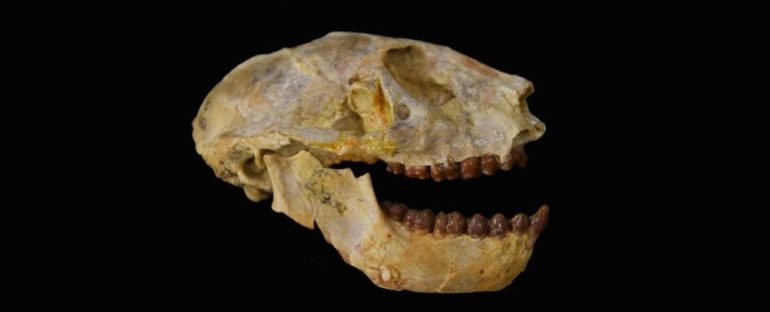The close of the Eocene roughly 33 million years ago marks a time of great change on Earth. In a slow reversal of what we’re seeing today, temperatures dropped and glaciers stretched their icy fingers towards the equator.
The loss of life across the Asian continent was profound. But Africa’s biodiversity, sheltered by the warmth of the tropics, appeared to go unscathed by the colossal changes. Or so we thought.
According to a recently published study by a team of researchers from across the US, we just weren’t looking at the fossil record the right way.
The research suggests that far from thriving through this cold change, mammals on the Arabian Peninsula and across the African continent experienced significant declines, with nearly two thirds of their peak diversity disappearing 30 million years ago.
Exactly what precipitated each loss isn’t clear, though with widespread temperature fluctuations and intense volcanic activity rocking the region, there’s no shortage of possibilities.
Whatever caused the loss, the ecological niches left open by the extinction event weren’t vacant for long.
“It’s very clear that there was a huge extinction event, and then a recovery period,” says Duke University biologist Steven Heritage.
Much of what we know about the shifting climate at the transition from the Eocene to the following epoch, the Oligocene, comes from analyses of changes in oxygen isotopes in cores of sediment dug from the ocean floor.
Matching these with various other clues on fluctuating sea levels and evidence of glacier growth gives us a general picture of how our planet as a whole was changing.
Yet signs on more local levels can be a little patchy, relying more on modelling and a close examination of fossils that pop up sporadically here and there.
Records taken on dry land can provide a mixed picture, so it’s hardly surprising that there’s been a debate over the impact global cooling ultimately had on masses near the equator.
On one hand, there’s evidence of animals such as the ancestral relatives of modern lemurs vanishing from Africa’s north east. Yet other studies suggest Africa experienced barely any environmental changes, or perhaps none at all.
Fossil records can be challenging to interpret thanks to their tendency to be rather patchwork. Not all species leave their remains neatly preserved in a convenient location, but with the right analytic tools, researchers can still pull a trove of information from just a handful of bones.
The team collected data on fossils representing five groups of mammals, including carnivores called hyaenodonts, two rodent groups, squirrel-like anomalures, and two primate groups – one occupied by our own ancestors.
From these samples, the researchers constructed a family tree representing the timing of known appearances and losses for each. Statistical tools could then give the scientists a better idea of when the losses were substantial enough in given areas to be linked with global events.
By looking at the characteristics within related groups, researchers could also see how species diversified to fill the niches vacated by the lost animals.
Take an animal’s teeth for example. Subtle differences in their shapes over a long period of time can tell us how species rapidly adapted to a newly abundant food source.
“We see a huge loss in tooth diversity, and then a recovery period with new dental shapes and new adaptations,” says lead author Dorien de Vries, from the University of Salford.
Incidentally, our own primate ancestors appear to be among the hardest hit. Diversity in anthropoid teeth 30 million years ago dropped to virtually nothing. It was so bad, a single type of dental morphology remained, constraining the kinds of foods their descendants could eat.
Bottlenecks like these are common throughout the evolutionary record. Knowing how species respond to them could be vital, given the squeeze we’re putting on so many ecosystems around the globe today.
Somehow, that tooth design got us through. Had it not, our species might never have seen the light of day.
“It was a real reset button,” says de Vries.
This research was published in Communications Biology.
